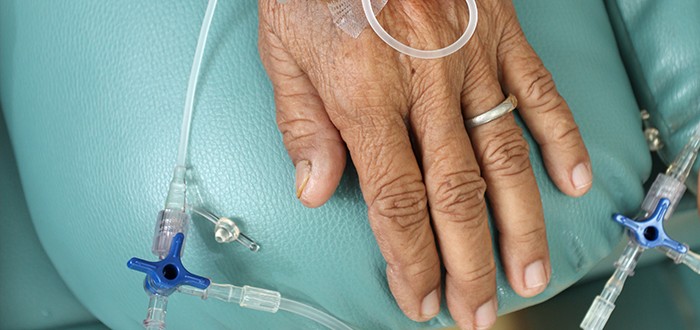Intensity-modulated radiation therapy has been shown to extend mesothelioma survival for many patients who undergo an extrapleural pneumonectomy.
However, radiation has a drawback — it can result in pulmonary toxicity. The consequences of this toxicity can be serious, death being the most serious.
The risk of pulmonary toxicity causes many mesothelioma doctors who perform extrapleural pneumonectomies to forego radiation.
Instead, they use chemotherapy to do the job of mopping up leftover mesothelioma cells the scalpel missed during the extrapleural pneumonectomy.
But now there is evidence suggesting it may be possible to eliminate the risk of radiation-induced pulmonary toxicity.
Researchers with the Baylor Scott and White Hospital at the Texas A&M Medical Sciences Center said the key to preventing fatal pulmonary toxicity is strict adherence to radiation dose constraints.
Not only that, but strict adherence to dose constraints also helps deliver better outcomes in general for mesothelioma patients who undergo an extrapleural pneumonectomy — with or without chemotherapy, according to the researchers.
Hospital Experiences with Radiation Therapy
The researchers shared these views during a presentation at the 2015 Annual Meeting of the American Radium Society.
They emphasized that these views resulted from their institution’s experiences with radiation following extrapleural pneumonectomy for malignant pleural mesothelioma.
In other words, their findings should not be taken as the last word on this subject and would need to be confirmed with further study.
In this particular study, the researchers kept tabs on 18 malignant pleural mesothelioma patients who received an extrapleural pneumonectomy at Baylor Scott and White Hospital.
Of this group, 17 were men. The age range was 40 to 76, making the median age 54. The most frequently encountered mesothelioma type was epithelioid.
Three of the patients were found to have stage II mesothelioma. Three others were at stage IV. Everyone else was stage III. The tumors were growing on the right side of the lungs in 11 of the 18 patients.
Right or left, it turned out that leftover mesothelioma cells were present in as many as four anatomic sites – the surgical margin, lymphovascular space, pericardium and chest wall.
Each of the patients underwent extrapleural pneumonectomy at some point between 2005 and 2014. In conjunction with that mesothelioma surgery, all of them received intensity modulated radiation therapy.
Mesothelioma Survival Extended for Some Patients
As for the radiation component, it was delivered to the full hemithorax, and thoracotomy and chest tube incision sites.
The highest mean lung dose of radiation was 9.3 Gy. The lowest was 5 Gy. Regardless of dose size, every patient received it in 25 fractions.
Afterward, the researchers relied on Kaplan-Meier curves to assess the overall survival and relapse-free survival times of all the patients.
Overall survival and relapse-free survival were assessed at various periods, but half of the patients were seen three years or later after surgery.
It turned out that at the three-year mark, eight patients remained alive despite mesothelioma returning in about 55 percent of the cohort.
Interestingly, though, half of the 18 patients went nearly 30 months before there was recurrence of the mesothelioma. Also, half the group experienced overall survival of a solid 38 months.
Importantly, no grade 3 acute toxicities were seen and there were no grade 3 or fatal pulmonary toxicities.
Taken together, these data convinced the researchers that radiation fatalities could be avoided by taking great care to give only the radiation dose needed to do the job — and no more.

